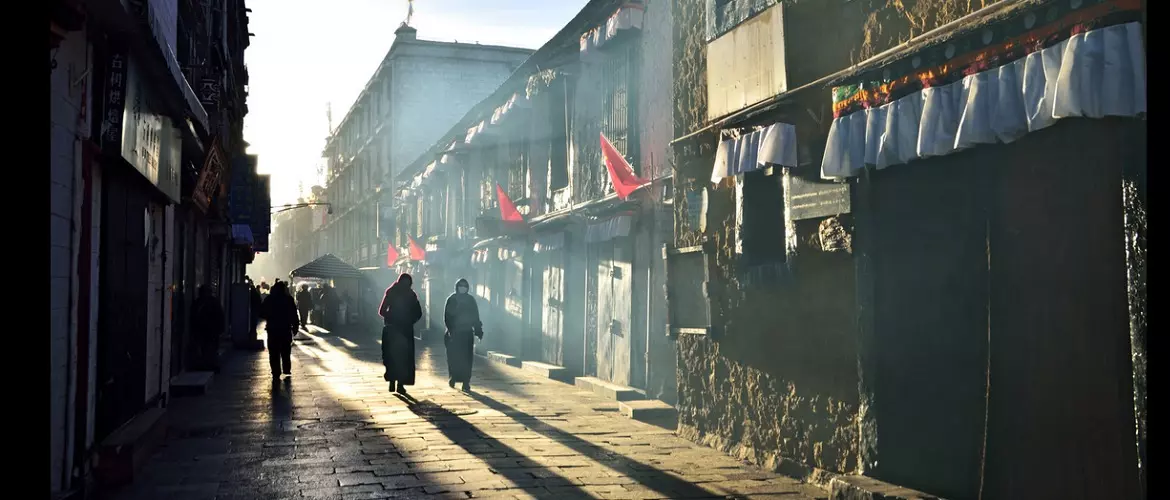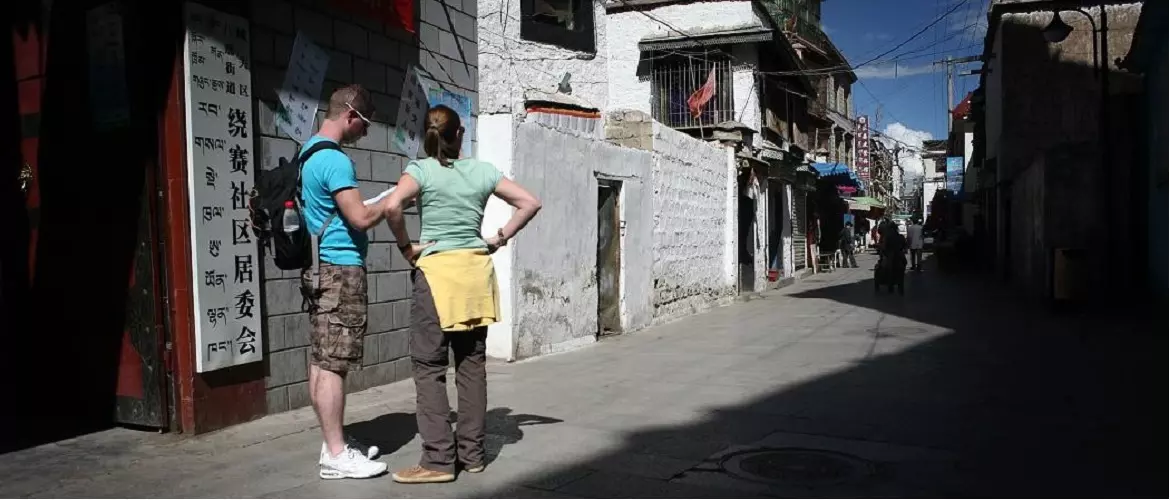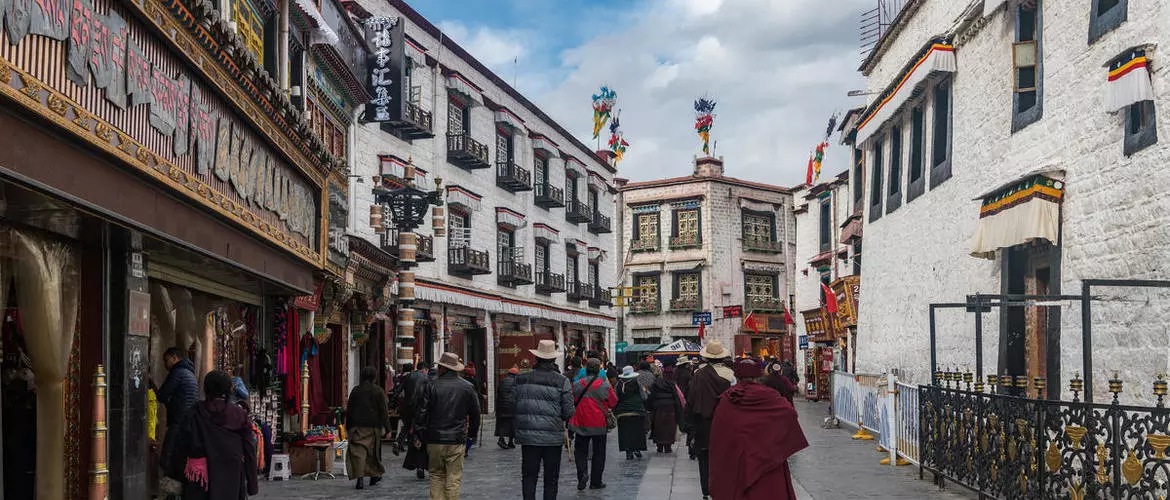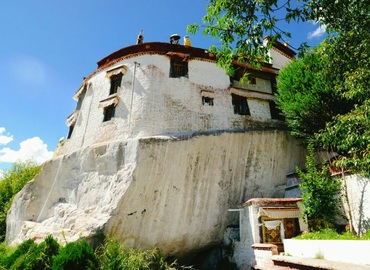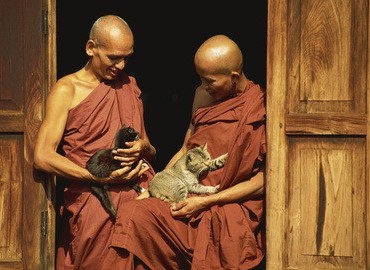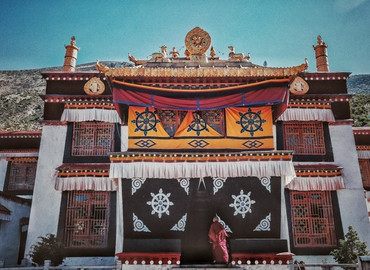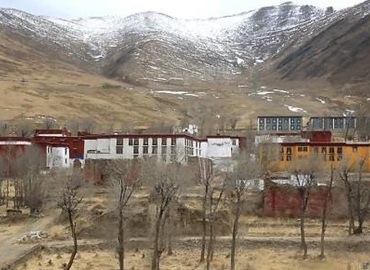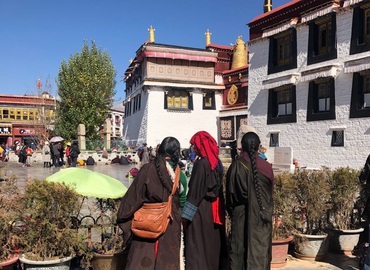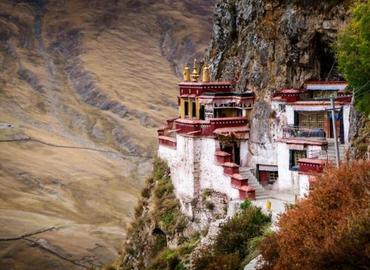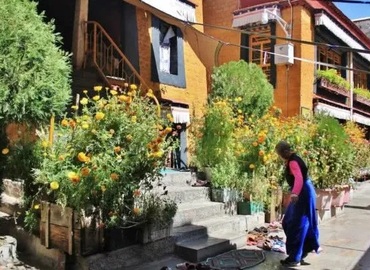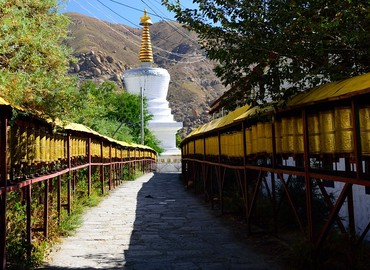Lhasa Old Town shelters the soul of Lhasa. This walk takes in craft workshops, backstreet chapels and pilgrim paths, passing en route some of Lhasa’s traditional architecture.
At the first turn of the Barkhor Circuit take a left and then quick right, past strips of dried yak meat and yellow bags of yak butter to the bustling Tromsikhang Market. After a quick look around the modern market, head north to the main road, Beijing Donglu, and then right to visit the Gyume Tratsang, Lhasa’s Lower Tantric College. It’s easy to miss this working temple; look for an imposing entrance set back from the road. It’s a surprisingly impressive place and little visited by foreigners.
Gyume was founded in the mid-15th century as one of Tibet’s foremost Tantric training colleges. In Lhasa, its importance was second only to Sera Monastery & Drepung Monastery. More than 500 monks were in residence, and students of the college underwent a physically and intellectually grueling course of study. The college was thoroughly desecrated during the Cultural Revolution, but a growing number of monks are now in residence. The main assembly hall has statues of Tsongkhapa, Chenresig and Sakyamuni. Look for the monk’s alms bowls encased in crafted leather, hanging from the pillars. Behind are huge statues of Tsongkhapa and two main disciples, and next door is a fearsome statue of Dorje Jigje. The 2nd- and 3rd- chapels are sometimes open.
Abt 50m further down the road, opposite the Kirey Hotel, are the deceptively long white walls of the small but active Meru Sarpa Monastery. The building in the middle of the traditional housing compound has a traditional wood-block printing press but doesn’t really welcome visitors. In the northwest corner is an atmospheric chapel with a statue of thousand-armed Chenresig, an unusual frog-faced Palden Lhamo and the preserved jaws of a crocodile-like gharial.
Cross Beijing Donglu, take the alley down the east side of the Kirey Hotel into the old town and follow the winding branch to the right, past the yellow walls of the House of Shambhala, which has a nice rooftop restaurant if you need a break. As you continue south you’ll pass Tibetan craftspeople making statues, embroidery, cabinets, prayer wheels and Tibetan banners. At the junction there’s the Eizhi Thangka Shop to the left; you want to take a left at this junction but first look down the alleyway to the right to see the brassware shop and monk’s clothing store.
As you head southeast from the thangka shop, past statue makers and a small market, curve right to the quiet bit interesting Karmashar Temple, once the home of the Karmashar, Lhasa’s main oracle. Look for the Karmashar statue in the far right corner of the back chapel and for the spooky faded icon painted on a pigskin bag in the main hall, pacified with offerings of tsampa and barley beer. Enter from the southwest side.
Continue east to a T-junction past outdoor pool tables, furniture shops and blaring video teahouses. At the T-junction take a left to visit stylish Lhasa village Crafts, where you can watch local craftsmen from the Ancient Art Restoration Centre(9 am ~1 pm & 2~7 pm Mon~Fri) across the courtyard, as they grind up mineral paints for thangka-painting and hammer away at metal sculptures in a corner workshop. Ask to see the center’s museum, which details the monasteries they have restored(everything from Samye to Ganden).
After loading up with souvenirs, head south towards the Muslim Quarter, the focus of Lhasa’s 2000-strong Muslim population. During Friday lunchtime weekly prayers and at dusk the quarter is full of men with wispy beards and skullcaps(non-Muslims are denied entry to the mosque itself). At other times the square bustles with wheeling-and –deal yartsa gunbu traders. Many women here wear black-velvet headscarfs, characteristic of the Linxia region of China’s Gansu province.
As you face the mosque, turn right and head southwest past Muslim tea stalls and butcher shops, branching along part of the Lingkhor pilgrim circuit to the yellow walls of the Ani Sangkhung Nunnery(admission Y30; 8 am ~5 pm).
This small, friendly and politically active nunnery is the only one within the precincts of the old Tibetan quarter. The nunnery probably dates back to the 7th century but is housed in a monastery until at least the 15th century. The principal image, upstairs on the 2nd floor, is a thousand-armed Chenresig. A small alley to the side of the main chapel leads down to the former meditation chamber of Songtsen Gampo, the 7th-century king of Tibet. the busy nuns run a great teahouse in the courtyard, as well as a popular shop.
Continue past a second mosque of the Lho Rigsum Lhakhang, one of four chapels surrounding the Jokhang at cardinal points. The lovely chapel, almost completely ignored by the tourists, has a central statue of Tsepame flanked by the four main bodhisattvas and its own inner kora. Monks from Ganden Monastery look after the site. A prayer-wheel shop across the road offers the ultimate selection of prayer-wheel accessories; perfect for the pilgrim who has everything. Next door is a prayer flag shop, should you want to pick up a string to leave at an upcoming pass crossing. If you are in need of refreshment, the pleasant garden and rooftop restaurant of the Trichang Labrang Hotel is just 100m to the west. Take a right here headed north and then a right, then a left. At the junction, you can see the Rabsel Tsekhang, a small temple affiliated with Sera Monastery.
The alley north takes you to the southeast corner of the Barkhor circuit, where you can continue clockwise to Barkhor Sq.
Email response within 0.5~24 hours.


